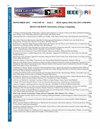FishEye Matlock: A Random Functional Encoding Mechanism for Secure Location Sharing
IF 1.3
4区 工程技术
Q3 COMPUTER SCIENCE, INFORMATION SYSTEMS
引用次数: 0
Abstract
Location tracking is difficult to protect due to the sequential nature of the data and the need for accuracy to offer a proper service and monetize the location information. Homomorphic encryption can partially solve the problem, but it typically has a minimal set of operations that are not feasible for geographical operations. Randomized Functional Encoding (RFE) allows the creation of random keys to decrypt data, according to the user's needs. Now, creating keys that only focus on a portion of the path while protecting the rest of the path has not been proposed in the literature, to the knowledge of the authors. This work proposes a RFE mechanism for Matlock-coded location data, called FishEye Matlock. This technique generates disposable random key matrices that only reveal a desired portion of the path, with the possibility for the user to add random noise to protect the revealed data and to control the amount of noise added to the rest of the path. This allows secure information sharing with particular actors, like law enforcement, so that the information of interest is shared without affecting the user's privacy. The algorithm is tested in two different path scenarios to show the technique's applicability, the level of protection, and the impact of the parameter value selection. Results show that the mechanism can be tailored to generate key matrices for different scenarios: at the lowest value of k, the level of noise reaches several thousands of kilometers of noise along the path, and between 60 and 100 times the level of noise, and with, the highest k value, between 40% to 80% of the maximum distance radius on average at the point of interest, and between 1.1 and 10 times the defined noise level at the path.鱼眼锁:一种安全位置共享的随机功能编码机制
由于数据的顺序性以及提供适当服务和从位置信息中获利所需的准确性,位置跟踪很难得到保护。同态加密可以部分解决这个问题,但它通常有一个最小的操作集,不适合地理操作。随机功能编码(RFE)允许根据用户的需要创建随机密钥来解密数据。现在,据作者所知,在文献中还没有提出创建只关注路径的一部分而保护路径的其余部分的密钥。这项工作为Matlock编码的位置数据提出了一种RFE机制,称为fishheye Matlock。该技术生成一次性随机密钥矩阵,仅显示路径的期望部分,用户可以添加随机噪声来保护显示的数据并控制添加到路径其余部分的噪声量。这允许与特定参与者(如执法部门)安全共享信息,以便在不影响用户隐私的情况下共享感兴趣的信息。在两种不同的路径场景下对该算法进行了测试,以显示该技术的适用性、保护水平以及参数值选择的影响。结果表明,该机制可针对不同场景定制关键矩阵:在k值最低时,沿路径的噪声水平达到数千公里,在噪声水平的60到100倍之间;在k值最高时,兴趣点平均在最大距离半径的40%到80%之间,在路径上的定义噪声水平在1.1到10倍之间。
本文章由计算机程序翻译,如有差异,请以英文原文为准。
求助全文
约1分钟内获得全文
求助全文
来源期刊

IEEE Latin America Transactions
COMPUTER SCIENCE, INFORMATION SYSTEMS-ENGINEERING, ELECTRICAL & ELECTRONIC
CiteScore
3.50
自引率
7.70%
发文量
192
审稿时长
3-8 weeks
期刊介绍:
IEEE Latin America Transactions (IEEE LATAM) is an interdisciplinary journal focused on the dissemination of original and quality research papers / review articles in Spanish and Portuguese of emerging topics in three main areas: Computing, Electric Energy and Electronics. Some of the sub-areas of the journal are, but not limited to: Automatic control, communications, instrumentation, artificial intelligence, power and industrial electronics, fault diagnosis and detection, transportation electrification, internet of things, electrical machines, circuits and systems, biomedicine and biomedical / haptic applications, secure communications, robotics, sensors and actuators, computer networks, smart grids, among others.
 求助内容:
求助内容: 应助结果提醒方式:
应助结果提醒方式:


